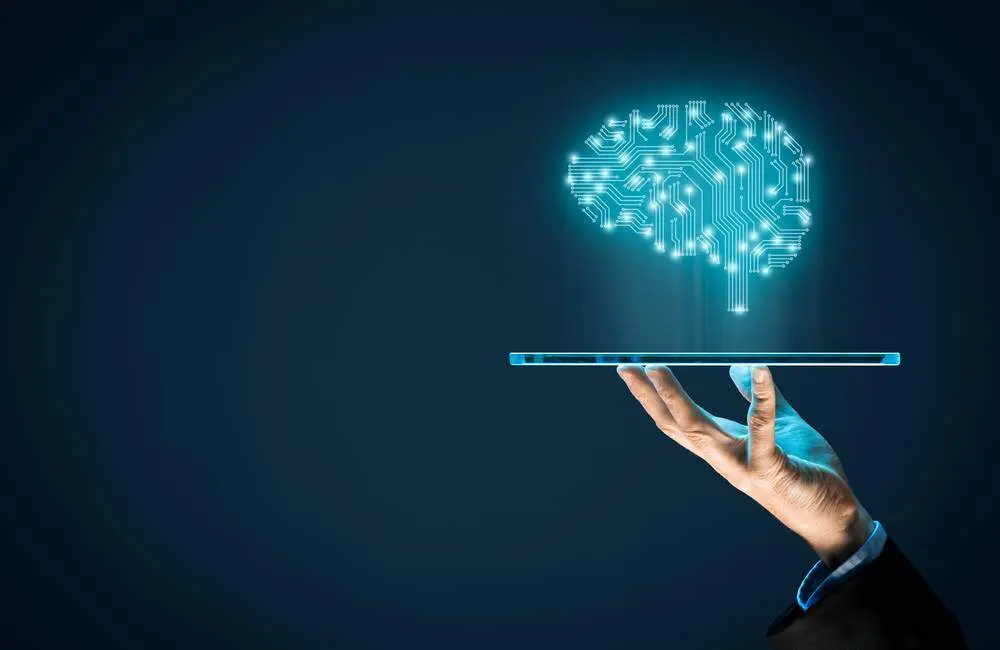Insights from the Girard School of Business and the School of Science and Engineering
Machine learning vs. artificial intelligence. What’s the difference? The terms are frequently used interchangeably, but there is a distinction to be made.
Machine learning is a subset of AI, explains Dr. Peter Salemi, a data scientist and Adjunct Faculty, Data Science & Analytics, at Merrimack College. “Anything that is machine learning can be considered artificial intelligence,” he says, “but not everything that is artificial intelligence can be considered machine learning.
In our new world of Big Data, machine learning is where the rubber meets the road. It’s the potential of AI put into action. As Bernard Marr writes in Forbes, machine learning is “the vehicle which is driving AI development forward.”
Let’s dig a little deeper.
Machine Learning vs. Artificial Intelligence
We may gain a deeper understanding of the difference between machine learning and AI if we drop “machine” and “artificial” from each term respectively and consider the terms from a human perspective. Intuitively, we understand human intelligence as the capacity to understand and apply knowledge (the ability, or potential, to think independently). Likewise, learning is the process of acquiring knowledge that informs our intellectual capacity and modifies our behavior based on what our experience teaches us. Over the years, hopefully, we all learn and thus improve our ability to act intelligently and think on our own. Simply put, the action of learning animates our intelligence.
We all possess intelligence in varying degrees, but our understanding of and ability to respond to the world around us depends on our learning. How we integrate, interpret, analyze, and act on the information fed into our intelligent brains.
We don’t want to push the analogy between humans and machines too far, but understanding that learning is an active subset of intelligence helps us to understand the importance of machine learning.
As Dr. Salemi explains, an intelligent machine can be fed a static set of rules that define, for instance, a spam email. “The rule-based algorithm is an example of artificial intelligence,” he says. “However, unless we redefine the rules based on our experiences, the algorithm won’t improve. This is where machine learning comes in.”
Machine Learning in a Data-Rich World
The power of machine learning unfolds when we set the basic rules of the game and then let machines learn for themselves. With each new bit of data the machine learns and gets ‘smarter’.
In our spam email scenario, we might determine that the words “bank account” in an email often indicate spam. But not always. We could write a filter based on an algorithm filtering out any email with “bank account” into our spam folder. At this level, we have artificial intelligence. It would be right most of the time, but not always. And it will never learn.
We want our spam-finding machine to learn. Instead, we feed the filter a collection of emails already identified as spam or not spam. Using this initial intelligence about what is and isn’t spam, we then write an algorithm that automatically learns how to identify spam on its own. The machine learns and gets better at identifying spam with each email it receives. We sit back in a spam-free world.
“Machine learning is the study of these algorithms,” says Salemi.
Our example is a simple one, but carrying this forward into the planet-sized abundance of data, the real power of machine learning comes into focus. To truly understand artificial intelligence, and harness the power of Big Data, you must first understand machine learning.
“Understanding machine learning is critical to our understanding of data,” says Mike Bradley, Program Chair, Dept. of Data Science & Analytics. “As additional data is gathered, we arrive closer to strategic efficiency by arriving at more precise models.”
That spam email can still slip through into our inbox highlights the need for dedicated data scientists trained and focused on machine learning.
Learn Machine Learning and Data Science
Big Data is here and getting bigger. Machine learning is the key to managing it. This is the reason that machine learning sits at the heart of the online Master of Science in Data Science degree program at Merrimack College. In Dr. Salemi’s Machine Learning course, students learn the four key methods of machine learning:
- Categorization
- Prediction
- Identification
- Detection
These concepts are further reinforced by learning the practical skills of pattern recognition within the confines of supervised and unsupervised machine learning.
The online Master of Science in Data Science degree program at Merrimack College prepares professionals for leadership roles in data science with a thorough grounding in machine learning.
Big Data is here and getting bigger. Machine learning is the key to managing it. Students earn their online MS in Data Science degree in 12 to 16 months and become a leader in the 21st-century data economy.
